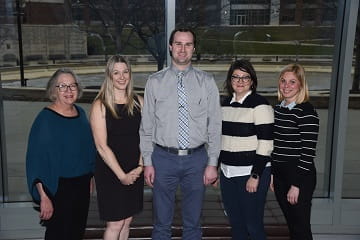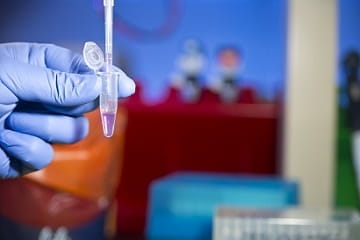The research lab of Leslie Hulvershorn, MD at Indiana University School of Medicine is focused on understanding more about risky decision-making in youth, including how the brain processes risky decisions and how it influences health like acquiring infectious diseases, suicidal behavior and using drugs of abuse. The lab is also interested in developing and implementing interventions that influence risky decisions. In addition to the research around risky decision making, the Hulvershorn lab is engaged in research that promotes child and adolescent behavioral health through improved access to evidence-based interventions, as well as appropriate use of psychopharmacologic treatments.
Research Updates
 Active Adolescent Behavior Research
Active Adolescent Behavior Research
While adolescent behavior provides some clues about motivation for early drug use/ sexual behavior, improved understanding of adolescent brain mechanisms underlying this behavior may shed additional light. One process thought to lead to early and problematic drug use/ sexual behavior is impairment in risky decision-making. The Hulvershorn lab has discovered ventromedial prefrontal activation abnormalities in high-risk youth during risky-decision making, prior to drug experimentation. Specifically, these abnormalities are present when high-risk 10 to 14-year-olds learn about the negative outcomes of their risky decisions. The lab speculates that failure of the brain to effectively process, and therefore learn from, a negative outcome may lead adolescents to continue to take drug/ sexual behavior risks.
Existing imaging-risk studies have defined risk according to a family history of substance use disorders, early substance use, the presence of impulsive/ risky behaviors and a combination of these models.
 To address the need for risky decision-making research, the Hulvershorn lab is studying two high-risk groups of non-drug using 11 and 12-year-olds (those with behavioral risk factors or without a family history of substance use disorders) and healthy comparison participants. Brain function of these groups are being assessed cross-sectionally using experimental decision-making tasks along with behavioral assessments of impulse control. The participants will then be invited back for interviews about their drug, alcohol and sexual behavior practices over several years. Outcomes of the project will allow IU School of Medicine experts to better understand the brain mechanisms that underlie risky-decision making in youth at high-risk for substance use disorders, human immunodeficiency virus (HIV), and the capacity for brain function to predict later drug and high-risk sexual behaviors. Ultimately, this research can be translated to novel interventions targeting high-risk youth.
To address the need for risky decision-making research, the Hulvershorn lab is studying two high-risk groups of non-drug using 11 and 12-year-olds (those with behavioral risk factors or without a family history of substance use disorders) and healthy comparison participants. Brain function of these groups are being assessed cross-sectionally using experimental decision-making tasks along with behavioral assessments of impulse control. The participants will then be invited back for interviews about their drug, alcohol and sexual behavior practices over several years. Outcomes of the project will allow IU School of Medicine experts to better understand the brain mechanisms that underlie risky-decision making in youth at high-risk for substance use disorders, human immunodeficiency virus (HIV), and the capacity for brain function to predict later drug and high-risk sexual behaviors. Ultimately, this research can be translated to novel interventions targeting high-risk youth.

Noninvasive Deep Neurostimulation Treatment for Addiction
New approaches to treating substance use disorders are desperately needed. The Hulvershorn lab is developing novel neurostimulation using temporal interference technology to treat substance use disorders with the long-term goal of developing a lightweight, inexpensive headband that can suppress the wearer’s cravings and support drug abstinence indefinitely. To do this, the lab is exploring newly developed non-invasive deep brain electrical stimulation methods that allow penetration to deep brain structures, especially those that are central to reinforcement of addiction, without stimulating the overlying cortex. Lab experts test methods first in subjects with nicotine use disorders and then in subjects with opioid use disorders, given the complexity of managing opioid withdrawal. The Hulvershorn lab proposes to compare feasibility and tolerability of temporal interference stimulation against existing transcranial direct current stimulation, whichhas been studied in substance use disorders, but has limited efficacy given its inability to stimulate deep brain regions. In collaboration with Joshua Brown, PhD and Peter Finn, PhD in the Indiana University Department of Psychological and Brain Sciences, the Hulvershorn lab team works to develop new interventions.
Collaborations
The Hulvershorn lab collaborates with other experts and programs within the community and at IU School of Medicine, including the Indiana Opioid Use Disorder Extension for Community Healthcare Outcomes (ECHO) and the Indiana Behavioral Health Access Programs for Youth.
Research Funding
Neural Response to Risky Decision Making in Youth at High Risk for Substance Use Disorders and HIV
Workforce and System Change to Treat Adolescent Opioid Use Disorder within Integrated Pediatric Primary Care
Indiana University Addiction Grand Challenge and the Indiana University Health Grand Challenge
Indiana Department of Child Services
Family and Social Services Agency
Clinical Trials
A phase 1, two-part study to evaluate the pharmacokinetics and safety of Sage-217 in adolescents (Part A: 12 to 17 years of age) and children (Part B: 7 to 11 years of age) with major depressive disorder.
Randomized, placebo-controlled, multi-site trial of extended-release naltrexone injection/bupropion XL tablets in the treatment of methamphetamine use disorder.
A six-week, multicenter, randomized, double-blind, parallel-group, placebo-controlled study of the efficacy and safety of cariprazine in pediatric participants (10 to 17 years of age) in the treatment of depressive episodes associated with bipolar I disorder.
ALKS 3831-A312
A phase 3, randomized, double-blind, 52-week study of OLZ/SAM vs olanzapine to evaluate weight gain as assessed by change in BMI z-score in pediatric subjects with schizophrenia or bipolar I disorder (ENLIGHTEN-Youth).
An open-label, multicenter trial to assess the safety and tolerability of lumateperone in the treatment of pediatric patients with schizophrenia or bipolar disorder.
Research Team Collaborators

Mohannad Abu Sultanah
Clinical Research Specialist

Olivia Murray
GS3 Medical Scientist Training Program













